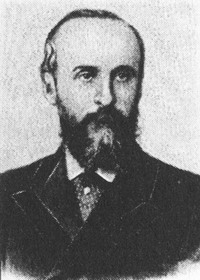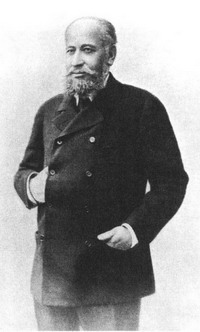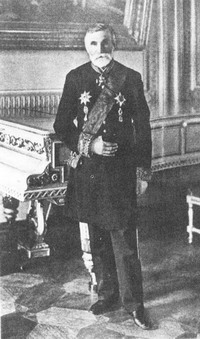Economic Development of Ukrainian lands in the late nineteenth - early twentieth century.
Reforms 60-70-s of the XIX century. accelerated economic development of the Dnieper Ukraine.
began intensive development of industrial production. Late 60's and especially in the early 70's began the development of Donbass. In 1871: Englishman John Hughes opened in Ekaterinoslavskoy province Ironworks, near which there was Uzivka village (now Donetsk). From 1861 to 1900 in the Donbass coal mining increased almost 100 times. In the Donbas in 1900 vydobuvalosya over 2 / 3 all-coal. It focused almost all coke. In 1881 foreign-based stock company, which began to develop iron ore mine in Saksaganskom Krivorozhskom pool. At the end of XIX century. Kryvbas gave 57.2% iron ore mining in the Russian Empire. In the second half of 80 years at the Krivoy Rog ore and coking coal Donbas began construction of large metallurgical plants in the Dnieper Basin: in Alexandria (now Kharkiv) Yekaterinoslav (Dnepropetrovsk), sec. Kamians'ke (Dnipropetrovsk). At the end of XIX century. Naddnipryanska Ukraine became a major coal and metallurgical base in Russia.
on the Right Bank and Left Bank continued to grow sugar, food processing, light industry. In the early 80's, due to the increased introduction of steam power, Ukraine's sugar industry has made significant development. Sugar production in Ukraine for the period from 1861 till 1897 has increased by 15 times. In this field the dominating position occupied Yahnenko entrepreneurs, Simirenko, Kharitonenko Brodsky. In mid-90's 153 sugar mills produced 23.9 million Ukraine pounds of sugar.
In 90 years Ukraine gave more than half of agricultural machines. In 1895 started the construction of the Kharkov Locomotive, and the next year - Lugansk Machine Building Plant. Already in 1900 these plants produced 233 locomotives (23,3% of the all production).
industrialization contributed to urban development. Particularly rapidly Odessa, which came out on top in Ukraine by number of industrial enterprises and the volume of industrial production. In 1879, in Odessa was 159, and, in 1890 - 322 (including 14 in the steam mills, 11 foundry-mechanical plant, factory gunny bags, etc.).. Odessa port runner for the loads among the seaports of Russia (after Saint-Petersburg).
industrial development was accompanied by intensive railway construction. The first railway 196 miles long - Balta, Odessa - was built in 1865 during the 1866-1879 Famine in Ukraine laid more than 4,5 thousand miles of railroad tracks. At the end of XIX century. length of railways in Ukraine was 1 / 5 of the whole railway network of the Russian Empire, the railway has linked all major cities in Ukraine between themselves and Black Sea ports and industrial centers of Russia. By the rivers of Ukraine went 220 ships.
industrialization increased the share of industrial production in Ukraine of the Russian Empire (to 20% in 1900) led to an increase in the number of cities (in 1897 lived in urban areas 16% of the population of Eastern Ukraine).
Rubizh nineteenth and twentieth centuries. Ukraine was in a period of completion of the industrial revolution and the transition to industrialization, the essence of which was to build large-scale machine industry, qualitative changes in structure of the economy (industry should prevail over agriculture and heavy industry - over easy). These large-scale radical changes taking place in extremely difficult circumstances. Russian Empire, like most advanced countries in 1900-1903 he survived the economic crisis. 1904-1908 period were years of depression and only in 1909-1913 he began industrial development.
Ukrainian industry, developing in line to general economic trends, both due to a number of circumstances (good geographical location, natural resources, cheap but skilled labor force, etc.). had its peculiarities. The economic crisis zahostryvshy competition by increasing polarization of enterprises, forced the bourgeoisie to maximize focus and combine forces. In the early twentieth century. Ukraine for concentration of industrial production in key areas was not only leader of the Russian Empire, but also took one of the first places in the world. Five major southern steel mills (Uzovskij, Kiev, Alexander, Petrovsky, Donetsk-Yurivs'kyi) produced about 25% of all-iron. Plants Brodsky, Tereshchenko, Kharytonenko, Yaroshynskoho Bobrynsky and produced about 60% of refined sugar in the Russian Empire. In large enterprises (over 500) operating in Ukraine more than 44% of all workers, while in CSha - only 33%.
concentration of industrial production for the stage of the process is the formation of monopolies and monopolies first started it in the most "concentrated" industries - steel, coal, iron ore and others. At the beginning of the century grow syndicates Prodvahon (1901), "Prodamet" (1902), "Truboprodazha" (1902), "Hvozd (1903). They were very powerful union. For example, formed in 1904 syndicate "Produhol, which included 18 separate joint stock companies controlled 75% of coal in the Donetsk basin. However, the bourgeoisie profits even during the crisis, while monopolies retarded economic development and hindered technological progress, dilute the regulatory scope of market relations.
monopoly of Ukraine were closely related not only to the Russian bourgeoisie, but also with foreign capital. Western bourgeoisie attracted enormous natural resources, cheap labor, high profit rate, the broad market. Significantly, over 25% of foreign investment in industry of the Russian Empire falls to the Ukraine. For example, in the coal industry 63% of capital was the property of foreign companies and in industry - 90%. A powerful syndicate "Produhol" virtually entirely controlled by the French investytoramy. This impeded economic development and deformed not only Dnieper Ukraine, but throughout the Russian Empire, because domestic producer vytisnyavsya from the market, and most of the profits derived from monopoly prices and government military orders, exported abroad.
important feature of the industrial development of Ukraine has been uneven development of its regions. If the South of Ukraine moved quickly to capitalist rails and began to rapidly develop industrial production, the southwestern region focusing mainly on agriculture, and is dominated by a petty way. Left Bank, where he kept the remains of serfdom, significantly behind other regions of Ukraine.
Gradually, Ukrainian lands formed certain industrial areas of specialization. Donbas became the center of the coal industry, the Nikopol basin - manganese, Krivoy Rog - iron ore, the Right Bank and Left Bank to some extent - the sugar. These centers of industrial production has acquired all-important. Supported this process much faster, compared with to general, the rate of growth of key industries. If the period between 1870 and 1900 production of iron ore in the Urals, the share of industry in total output all of the national economy was 48.2%, while the figure was equivalent to general only 40%. Ukrainian lands in the late nineteenth - early twentieth century. become one of the key industrial areas of the Russian Empire. It was here in 1913 produced 69% of all-iron production, 57% and 58% steel rolled products. In Ukraine at this time accounted for 20.2% of all machinery and metal promyslovosti Russia.
However, despite the fact that Ukraine was an enormous industrial potential is concentrated, it still remained an agricultural area of the empire, which lived in rural areas 80% of the population.
Imperial Center, providing traditional policies and deformuvav impeded economic development of Ukraine, seeing in this region above all a strong raw material base. According to some reports, on the Ukrainian industry in 1913 accounted for almost 70% of all raw materials and semi-Russian Empire and only 15% of manufacturing industry.
the West Ukrainian lands after 1848 feudal order has not prevented economic growth. But here there was no such rapid growth of productive forces as in other parts of the Habsburg Empire. The economic situation even worse. This was due to the fact that in 1861 (built railway Lviv-Vienna), wide rail construction begins, which united the land west of the main industrial centers of the empire. It seemed like it would promote economic recovery, as was the leading European countries. But in the end hlynuv flow of goods from the industrialized regions of the empire (Austria, Czech Republic), which rozoryv local crafts and destroy all the traditional system of management. All this occurred against the backdrop of rapid population growth.
to saving the land of the local administration tried to overcome such economic disparity between the banking and credit system and investments. At the beginning of the twentieth century. contributed to some positive changes.
interest of foreign capital caused the oil fields, minerals, vast tracts of forest. As a result, are rapidly develop the oil and logging industries. In the late nineteenth century. foreign capital took the leading position in the economy of Western Ukraine. Large firms perebyraly trade, banks, whole industries.
Professional structure of the population of Western Ukraine and the central provinces of the Austrian Empire
Eastern Galicia

Northern Bukovina

Lower Austria

Note . In Transcarpathia 85% of the population at that time worked in agriculture, 10% in industry and transport.
Agriculture Western Ukraine is developing very slowly. It was not only the largest agricultural region of the empire, but also end with the lowest level of agricultural production. Huge tracts of land were owned by landlords, while most peasants are constantly suffering from shortage of arable land, not in spite of some expansion of acreage. The natural population growth further aggravated the situation. Intolerable conditions of existence and the ghost of starvation causing villagers leave in search of work to other countries.
Western industry developed slow pace. The vast majority of industrial workers there worked in large-scale industries and to small enterprises and workshops. According to official figures, 1885 in eastern Galicia in 175 companies manufacturing industry with the number of workers over 20 were only 10 thousand souls. In Transcarpathia, but then there have been several similar enterprises, and Bukovina were not.
branch structure of industrial land was one-sided. The bulk of the product gave the field of mining and processing of local raw materials - forest, wood, oil, brown coal, salt. The biggest industry was the oil industry, which started to develop since the 70's nineteenth century. Center for the oil industry was Borislav. Control over development of this industry immediately set Austrian and German businessmen. The interest in increasing exports of oil Galician encourage them to use technical improvements. The result was the growth of oil production from 20 tons a year in 1874 to 326 thousand tons in 1900, accounting for 4% of world production. But the Viennese government prevented construction naftoperehinnyh plants in eastern Galicia. Galician oil processed into Austrian and Hungarian plants. Although oil and kerosene production steadily increased, farmers had to buy it for that and lit their homes splinters.
The large number of high quality wood (oak, fir and beech) resulted in the second half of the 60 - early 70's rapid development of the lumber industry. Foreign businesses bought for a song or rented from the landlords and cut down their arrays. In forest regions of the Carpathians were drawn railways, and mahogany exported to Germany, Austria, Italy, England, France, Turkey and other countries. In the early twentieth century. taken out of the Carpathians annually 608 million cubic meters. of forest floor.
If sawmill industry developed rapidly, the pace of development of furniture industry and other sectors of wood processing industry was very slow. Foreign entrepreneurs are reluctant to invest in their development. Requirements of the Western population in furniture, paper and cardboard products imported satisfied.
the least developed areas owned light and metal processing industry. Light industry remained at the stage of small craft and could not compete with the Austrian and Hungarian factory products. Local weavers, cobblers and tailors clothing and footwear provided only the rural population, and commoners wore western clothing fabric textile mills. "Products made of fabric and yarn from the shirt until the carpet, - wrote a contemporary Galician economists - iron and metal products, tools, machinery, fertilizers ... word of all that person needs from cradle to grave until almost all import, buy, lend to others ».
largest companies in the Region was rail maintenance facilities in Ukraine, and Stanislav Stryi. However, do they repair the rolling stock was not possible, and machines were sent to Germany. Formation of plant industry in the land was extremely slow. In the second half of the nineteenth century. in the land were only five large state-owned tobacco factories (Eastern Galicia - four in Transcarpathia - one), employing four thousand workers. In Eastern Galicia worked several match factories, metallurgical and machine building enterprises.
development industry has been associated with the emergence of new social groups - industrial workers. In the late nineteenth century. their number in the land was about 55 thousand workers were enriching ruined artisans and peasants.
State of Western workers was among the worst in Europe.
Salaries industrial workers in the province was a half times lower than in the central regions of the empire. According to official figures of Austrian institutions, wages of workers in Lviv was 48-58% of wages of their counterparts in Vienna.
agrarian reforms implemented in Western Ukraine during the revolution of 1848-1849, farmers freed on remnants of serfdom, but their situation remains very serious. With its release of the farmers had over 50 years to pay annual fees. Overall reform of 1848 cost the Western peasantry more than 300 million florins.
in favor of landlords and to resolve the land question. Although under the reform for the peasants had kept those lands, which they enjoyed, they stripped the landlords more fertile grounds. Thus after 1848 the landlords remained in eastern Galicia - 44% more land in Bukovina - 54% in Transcarpathia - 70%. West-land became the land, where agriculture accounted for the main picture of the small size of farms 5.2 hectares (80% of farms) that do not provide even the minimum needs of peasants and large land holdings of 15-20 hectares.
Consequently, the evolution of agriculture took place very slowly. In economic relations between peasants and landlords dominated the refining - lent for grain by renting the land for firewood and more. Only in the late nineteenth century. refining began to give way to "free labor.
One of the main issues for the farmer at the time was right to use the servitude. Not able to farming without the use of forests and grazing was evident. But landlords were administered pre-excessive price for their use, knowing that ultimately lead nowhere. Hopes of thousands of peasants to find justice in the courts were unsuccessful. During 1848-1881 he was in the courts of the land of 32 thousand cases were considered rights of easements from landowners whose benefit it was decided to 30 thousand
inability of most farmers to provide for necessary by the work in its own economy forced them to seek additional income. Many went to naymytuvaty large landowners. However, for their work, they received four times less than the agricultural workers in other provinces of the Habsburg Empire. Another output was the mass emigration.
new challenge in life napivzhebratskomu western peasantry was usury. Forced to borrow money to pay many taxes, farmers quickly found themselves in the dependence on moneylenders, who, resorting to shameless fraud, under the pretext of paying principal and interest on it (on average 150-250%) taken away their business. The result was impenetrable plight of the peasants spread drunkenness. Landowners often pushed themselves to this, saying that instead of wages for work laborer coupons which they can be realized only in the pub. It is not surprising that in the late nineteenth century. Eastern Galicia fell one pub for every 230 inhabitants, while the primary school - for every 1500. Western Poverty poor peasants have a problem about which you know and indignation in many European countries.
main branch of agriculture in the land was agriculture. In impoverished rural progress in mass cultivation of the soil was very low. New agricultural machinery factory production even in the late nineteenth century. applied only in some wealthy households. A large number of cheap labor landless peasants did not profitable import expensive machinery from the western regions of the empire, or even from England. Slow progress implementation agronomic science, outdated technology of cultivation land indication to low yields. During the second half of the nineteenth century. yield of crops in the land was half to two times lower than in Western countries.
And yet, though slowly, the Western view of the village changed. The vast majority of peasants were forced to go to work. Formed a new social group of Western farmers in business. Unlike the urban bourgeoisie and the landlords, farmers, entrepreneurs were mainly Ukrainian.
layering peasants at Western
Eastern Galicia

Northern Bukovina

Transcarpathia

During the second half of the nineteenth century. agriculture in the Western lands agricultural evolution occurred gradually as a result of which they crossed on the market path. Politics Habsburg monarchy caused that this evolution took place very slowly, combined with the impoverishment of the peasants.
 English
English













